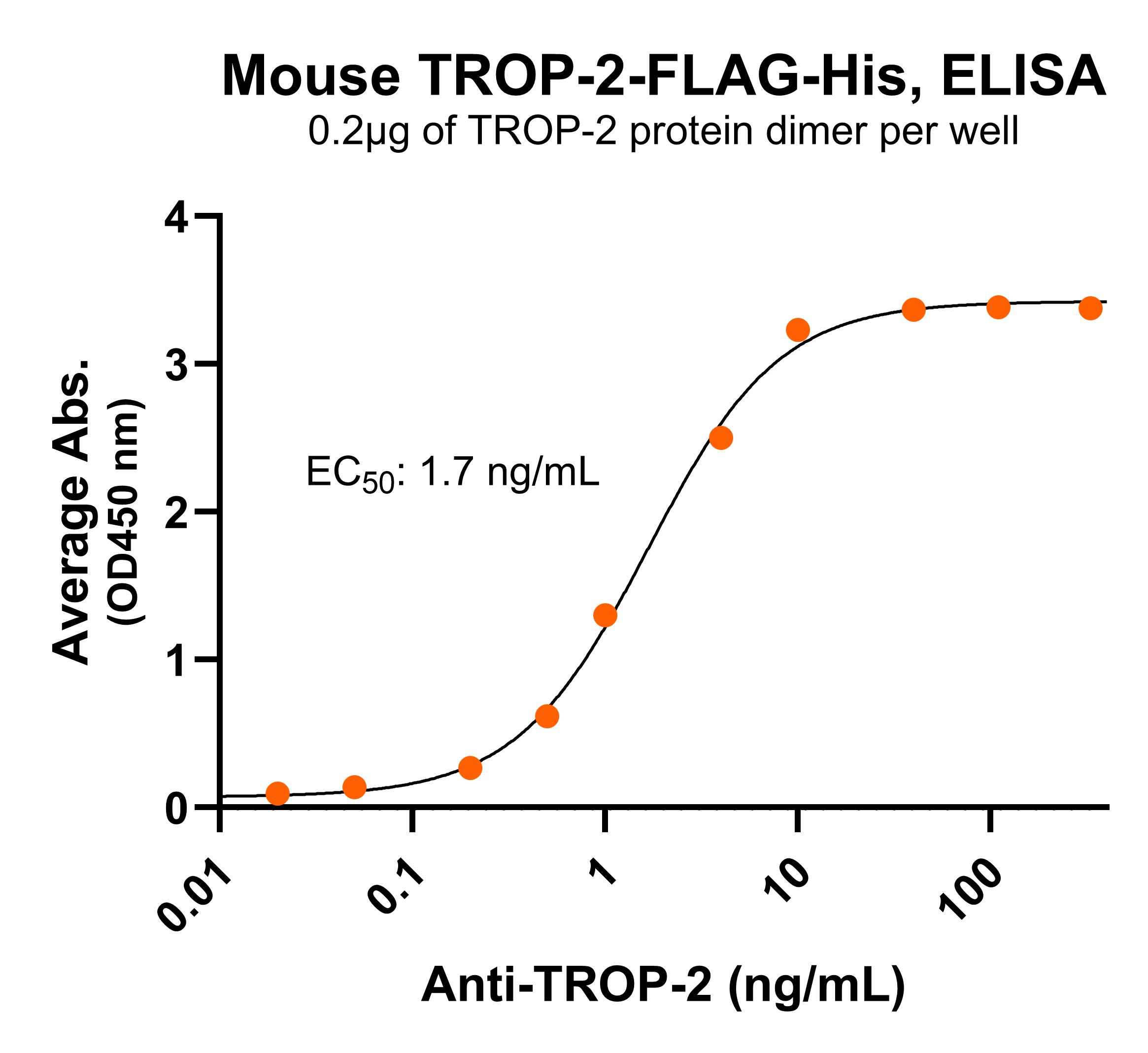Predicted Molecular Weight: 74 kDa
SDS PAGE Molecular Weight: The migration range of the dimer protein with glycosylation under non-reduced condition is between 120 and 190 kDa on SDS PAGE.
Protein Construct: TROP-2 protein dimer contains a TROP-2 extracellular domainfused with a proprietary cis-dimer motif followed by a tandem FLAG-His tag at the C-terminus.
TROP-2 (trophoblast cell surface antigen 2) is a cell-surface type I transmembrane glycoprotein expressed in epithelial cells of various tissues. TROP-2 is also known as TROP2, TACSTD2, EGP-1, pancreatic carcinoma marker protein GA733–1/GA733, gastrointestinal tumor-associated antigen GA7331, GP50, M1S1, tumor-associated calcium signal transducer 2, CAA1, and TTD2. TROP-2 exists as a monomer on the cell surface but can form dimers or oligomers on cancer cells, enhancing its role in cancer progression. TROP-2 contains an extracellular domain, a single transmembrane helix, and a cytoplasmic tail. The extracellular domain is comprised of three subdomains: a cysteine-rich domain, a thyroglobulin type-1 domain, and a cysteine-poor domain. TROP-2 is normally involved in the maintenance of epithelial tissue integrity. It is overexpressed in many human cancers including breast cancer, non-small-cell lung cancer, thyroid cancer, gastric cancer, pancreatic cancer, and ovarian cancer. TROP-2 overexpression is involved in cancer cell growth, proliferation, invasion, migration, and survival of cancer cells, and is associated with tumor aggressiveness and poor prognosis. TROP-2 is an emerging target of cancer therapeutics. Mouse TROP-2 shares 80–85% amino acid identity with human TROP-2. The functional domains are highly conserved, suggesting similar biological roles.
 MW: Molecular Weight marker reduced condition
NR: TROP-2 dimer under non-reduced condition
MW: Molecular Weight marker reduced condition
NR: TROP-2 dimer under non-reduced condition Immobilized mouse TROP-2 protein dimer
Immobilized mouse TROP-2 protein dimer